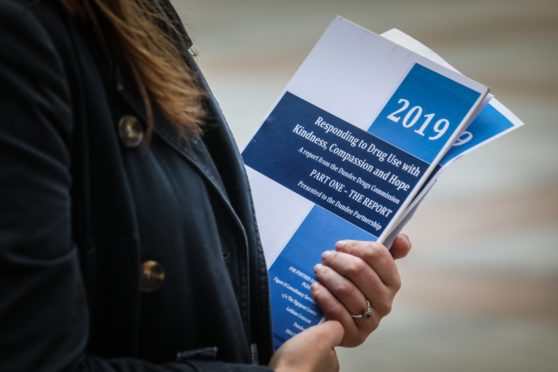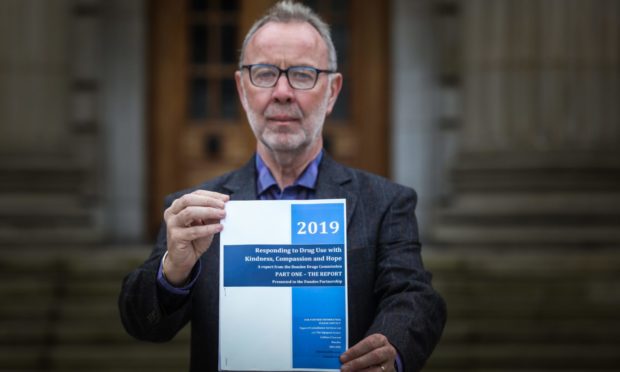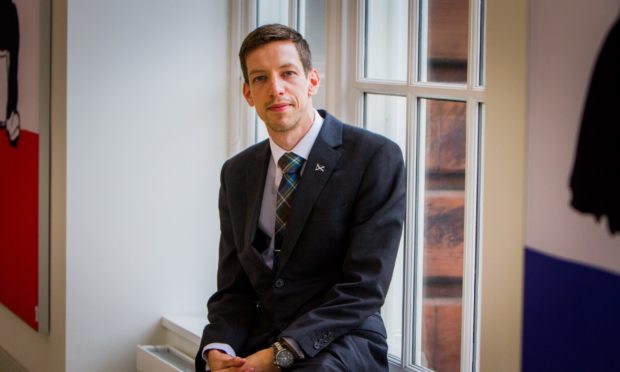Drugs deaths in Dundee have been rising in recent years – and behind every statistic is a person who has suffered and their grieving loved ones.
We took a look at the scale of the problem, the troubleshooting body set up to tackle it, it and whether its efforts were bearing fruit.
What is Dundee Drugs Commission?
Dundee Drugs Commission is an independent panel formed in 2018 to “consider the nature, extent and impact of drug use and to look at drug-related deaths”.
Why was it set up?
Dundee Partnership – a body made up of representations from Dundee City Council, Scottish Enterprise, Tayside Police and NHS Tayside amongst others – formed the commission “as a response to the increasing number of drug-related deaths in the city.”
The city earned the unwelcome title of “drugs capital of Europe” against a backdrop of the Scottish Government declaring drugs deaths a “public health emergency” for Scotland.
A Dundee City Council report published in September 2020 said: “It is estimated that in Tayside there are 4,600 problem drug users, 50% of which live in Dundee City.”
Who is on the Dundee Drugs Commission panel?
There are 20 people, including doctors, councillors, charity workers, support-group leaders and people with personal experience of drug abuse. Some are based in Tayside while others are based elsewhere in Scotland and the UK.
What did the Dundee Drugs Commission do?
It started work in 2018 and spoke to more than 1,000 people, including drug users, their families, health workers, social workers, charity staff, councillors and academics.
It held six public-evidence sessions, 10 focus groups and visited six voluntary sector hubs
With the help of Dundee-based Figure Consultancy Services, the commission also learned what other countries, such as Canada, Iceland and Portugal, do to tackle drug abuse.
The commission tabled an 80-page report including a series of recommendations for change.

What were the commission’s recommendations?
There were 16 recommendations for change in Dundee, plus eight suggestions for how change could be made elsewhere in Scotland.
One recommendation is to ensure drug users are not discharged from hospital until a full range of services have been organised for them, such as counselling and an outreach worker.
Another is to merge drug abuse support services with mental-health services as “most people with substance use problems also have mental-health problems”.
There are other recommendations related to strong leadership, child protection, the appropriate treatment of women and eliminating the stigma of drug use.
What happened to the recommendations?
Dundee Partnership used them to draw up an action plan for tackling drug abuse in the city.
The action plan included: Increasing the capacity of specialist services so, for example methadone users can get prescriptions the day they order them to prevent them from going back to heroin.
The action plan also included measures aimed at keeping drug users on treatment programmes and providing greater help for children living with drug users.
Dundee City Council provided £500,000 to help various organisations tackle the action plan.
Has the action plan been implemented?
A fraction of it has, but most hasn’t, mainly due to Covid-19.
In some ways, the pandemic helped as the first lockdown forced health workers to work differently, to the benefit of drug users.
For example, they set up a service where methadone would be delivered to people’s homes as collection wasn’t possible. This ensured drug users got what they needed and reduced the risk of them turning to heroin.
But, in the main, Covid-19 had a negative impact as meetings were cancelled and support services either shuttered or transformed into remote help, using video calls.
Only three of the 68 suggested action points had target completion dates for after March 2020, when Covid-19 arrived and most of the work planned for 2020 and the early part of 2021 has not been possible.
At a meeting of Dundee City Council’s policy and resource committee in September 2020, councillors agreed to set new completion dates due to the pandemic.
More funding announced for Dundee Drugs Commission by city council
Are there any other factors posing a problem?
One measure of success of the action plan’s implementation will be if drugs deaths fall.
The latest statistics were published in December 2020, but they only covered 2019 – before the action plan had a chance to be implemented.
The 2020 drugs deaths figures are likely not to be out until at least autumn 2021.
And are the figures meaningful?
That is debatable.
Drugs deaths can only be confirmed after a toxicology test – performed at Glasgow University – but in some cases it is taking eight months for tests to be done.
That means we don’t know if cases have been missed out in drugs-deaths statistics due to the toxicology-test backlog.
The Crown Office allocated an extra £300,000 of funding in an attempt to cut the backlog and said it was in discussions with companies that could help.
A Glasgow University spokesman said: “Following the Crown Office’s decision to renegotiate the contract for toxicology services, the delay in concluding a new agreement created uncertainty which impacted upon staffing levels and the time taken to deliver reports.
“This was compounded by the impact of Covid-19. We continue to work closely with the Crown Office to address these issues.”
In an attempt to get an idea of the number of toxicology tests outstanding, we used freedom of information powers to ask Police Scotland how many suspected drugs deaths there had been in 2019.
However, Police Scotland refused to say, claiming it could cause distress to individual families – despite numerical data not identifying individuals.
We took the case to the Scottish Information Commissioner, which will shortly rule on whether Police Scotland should make the information public.
Are those in charge hopeful things will improve?
John Alexander, leader of the council and chairman of the Dundee Partnership, said: “I think it’s probably not useful when we’ve got politicians suggesting the actions of the Dundee Drugs Commission, the action plan that’s been developed and being taken forward, will somehow miraculously turn round a drug issue of 20-30 years in the space of six or 12 months.”
He added: “I am hopeful that we will be calling Dundee a city of recovery in the future as the action plan takes full effect.
“We cannot be complacent and everyone in the partnership takes their responsibilities around these issues extremely seriously.”
Dundee Drugs Commission chairman Dr Robert Peat said: “Although it’s difficult, we need to keep working at it. We will be conducting a review soon to check on progress.”
Eric Knox, chief executive of Dundee Volunteer and Voluntary Action, said: “This is a difficult time for individuals struggling with substance issues.
“The partnership has focused on what is needed on the ground at the moment to ensure people are as safe as they can be. Even so, there must still be innovation in the way we deliver services.”
Chief Inspector David McIntosh, Police Scotland’s area commander for Dundee, said: “There is significant ongoing work in regard to the Dundee Drugs Commission.
“We will work with partners to provide support for drug users – it is very much a multi-agency approach.
“We will continue to relentlessly pursue individuals in the supply of drugs as a police force but it’s not something we are simply going to enforce our way out of.”

